
Format: Hardback
Pages: 392
ISBN: 9781636240138
Pub Date: 15 Dec 2021
Illustrations: maps and photographs
Description:
After the shocking fall of France in June 1940, the U.S. Army embarked on a crash program to establish a new armored force.
One of the units formed was the 756th Tank Battalion (Light), activated at Fort Lewis in June 1941. Because of severe equipment shortages, the new battalion trained without tanks for several months, but by early 1942 were equipped with new M3 light tanks. While companies A and C took part in Operation Torch, B was withheld for lack of cargo space in the transport ships and re-joined the battalion two months later in north Africa. The units undertook reconnaissance missions following the landings in Salerno. In December 1943 the battalion was ordered to upgrade to a medium tank (Sherman) unit. Given less than a month to reorganize and train in M4s, the battalion was sent into the Mignano Gap on January 11, 1944 and supported the 34th Infantry Division in the capture of Cervaro and Monte Trocchio. Later in January B Company supported the troops of the 100th Battalion on bloody but ill-fated attempts to cross the Rapido river - finally at the third attempt the battalion established a secure bridgehead across the Rapido. During the next two days the nearby town of Caira was also captured, opening a clear avenue for an attack on Cassino. Based on decades of research, and hours of interviews with veterans of the 756th Tank Battalion, Jeff Danby's vivid narrative puts the reader in the turret of B Company's Shermans as they ride into battle. Endorsements: “This is an excellent, in-depth, day-to-day account of the operations of one tank company of a US independent tank battalion, B Company, 756th Tank Battalion, in World War II… With its focus on tank crew members and their commanders this is a unique addition to the literature on WWII.”––A. Harding Ganz, Associate Professor Emeritus of the Ohio State University at Newark, author of Ghost Division “It is very rare to find a book that takes the reader down to the close and personal level of a company of men in battle. We have seen that for paratroopers in Band of Brothers and now we have it for a tank unit, in this case Company B of the 756th Tank Battalion. And what a remarkable book it is … the book is very hard to put down and by the end of it I found myself looking forward to reading the next volume.”––Jeffrey Plowman, author of Rampant Dragons: New Zealander’s Experience in Armour in World War II, Tank Attack at Monte Cassino: The Cavendish Road Operation 1944 and The Battles for Cassino Then and Now “[Danby] brings all his considerable skills to this unique Battalion level history. No lead is left unfollowed and this adds not only to the legitimacy of his work but also tells the personal story of these valiant men … It may be the best US armored unit history ever put together so long after the conflict … For the small unit historian of the Armored Units of the Second World War, I cannot recommend this book more highly.”––Victor Failmezger, author of American Knights, the Untold Story of the Legendary 601th Tank Destroyer Battalion “Jeff Danby weaves an empathetic tale of people in his history of Company B, 756th Tank Battalion. From the very start, he frames portentous global events in terms of how the young men who would fight the war would have seen them. Danby’s prose is punchy, visually evocative, and entertaining.”––Harry Yeide, author of The Tank Killers, The Infantry’s Armor, and Steeds of Steel “Danby introduces and develops an extensive cast of personalities, average American soldiers, as they experience combat and the quiet periods in-between, and gives the reader precious insight in to why this unit was so combat proficient. Jeff has written another great story which I recommend to everyone interested in WWII and especially tank units in that war.”––LTC Timothy R. Stoy, U.
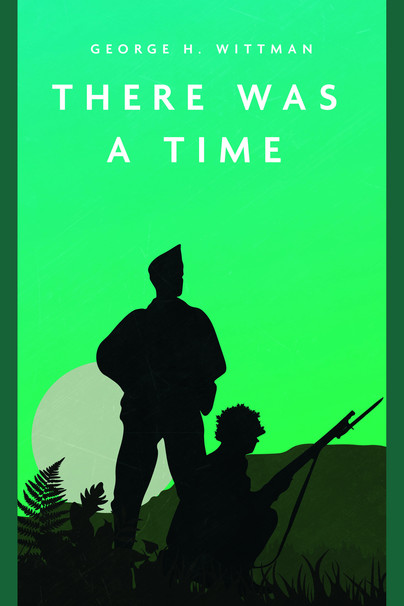
Format: Paperback
Pages: 312
ISBN: 9781636240442
Pub Date: 15 Dec 2021
Description:
It is the summer of 1945, the last and very dangerous days of World War II. The Office of Strategic Services is in close, cooperative contact with Ho Chi Minh and the fighting cadre of the Viet Minh, working against the Japanese. In the closing months of the war, the OSS parachute a team of special operations soldiers into Tonkin, northern Viet Nam.
Led by Major John Guthrie and his second-in-command, Captain Edouard Parnell, both experienced officers from their earlier assignments in occupied France and Belgium, the team are tasked with working with Ho Chi Minh against the Japanese in the midst of various groups vying for control of Indochina. Guthrie and his team have to adapt to the entirely different context of Vietnamese politics in order to encourage communist operations against the Japanese. Guthrie in particular, struggles with both his personal and professional conflicts. The relationship that Guthrie and the rest of the OSS team develops with the Viet Minh leadership is of distinct annoyance to French ambitions to regain control of their colony, Indochina.Based on the little-known true story of American and Viet Minh collaboration in 1945, this novel challenges the later-accepted dogma of both those supporting and those opposing the American role in the Viet Nam conflict. This novel notes how what is seen at a later time is often inadequate to understand what actually went on. Its contemporary relevance is simply a mirror of what is always the case in international affairs: today's enemies can and may be tomorrow's friends - and most importantly, the reverse is true also.
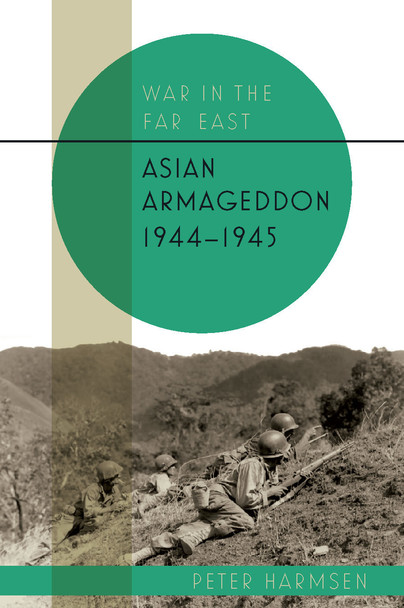
Format: Hardback
Pages: 272
ISBN: 9781612006277
Pub Date: 10 Dec 2021
Series: War in the Far East
Illustrations: 30 b/w photographs
Description:
The last instalment of the War in the Far East trilogy, Asian Armageddon 1944-1945, continues and completes the narrative of the first two volumes, describing how a US-led coalition of nations battled Japan into submission through a series of cataclysmic encounters. Leyte Gulf, the biggest naval battle ever, was testimony to the paramount importance of controlling the ocean, as was the fact that the US Navy carried out the only successful submarine campaign in history, reducing Japan's military and merchant navies to shadows of the former selves. Meanwhile, fighting continued in disparate geographic conditions on land, with the chaos of Imphal, the inferno of Manila, and the carnage of Iwo Jima forming some of milestones on the bloody road to peace, sealed in Tokyo Bay in September 1945.
The nuclear blasts at the end of the war made one observer feel as if he was ‘present at the creation’. Indeed, the participants in the events in the Asia Pacific in the mid-1940s were present at the creation of a new and dangerous world. It was a world where the stage was set for the Cold War and for international rivalries that last to this day, and a new constellation of powers emerged, with the outlines, just over the horizon, of a rising China. War in the Far East is a trilogy of books comprising a general history of World War II in the Asia Pacific. Unlike other histories on the conflict it goes into its deep origins, beginning long before Pearl Harbor, and encompasses a far wider group of actors to produce the most complete account yet written on the subject and the first truly international treatment of this epic conflict. Author Peter Harmsen weaves together complex events into a revealing and entertaining narrative, including facets of the war that may be unknown even to avid readers of World War II history, from the mass starvations that cost the lives of millions across China, Indochina and India to the war in subarctic conditions in the Aleutians. Harmsen pieces together the full range of perspectives, reflecting what war was like both at the top and on the ground.

Format: Hardback
Pages: 192
ISBN: 9781636240909
Pub Date: 10 Dec 2021
Series: Casemate Illustrated Special
Illustrations: 150 photographs and illustration
Description:
This book provides an overview of the victory markings painted on the fins and rudders of the planes of the German day fighter and night fighter aircraft between 1939 and 1945, and demonstrates how these were applied in reality through the profiles of nineteen pilots, including some of the most emblematic pilots of the Luftwaffe: Hans Troitzsch, Johannes Gentzen, Frank Liesendahl, Wilhelm Balthasar, Otto Bertram, Joachim Müncheberg, Karl-Heinz Koch, Kurt “Kuddel” Ubben, Felix-Maria Brandis, "Fiffi" Stahlschmidt, Franz-Josef Beerenbrock, Heinrich Setz, Walter "Gulle" Oesau, Max-Hellmuth Ostermann, Heinrich Bartels, "Fritz" Dinger, Martin Drewes, Egmont zur Lippe-Weissenfeld and Ludwig Meister.

Format: Hardback
Pages: 160
ISBN: 9781636240640
Pub Date: 10 Dec 2021
Series: Casemate Illustrated Special
Illustrations: Color
Description:
A comprehensive and fully illustrated account of all the vehicles needed to move, use, and maintain communications equipment vital to the success of the U.S. Army during World War II, including trucks, workshop trucks, vans and trailers all designed by the Signal Corps, described in technical detail and illustrated by hundreds of period photos.
The Signal Corps was at the forefront of the technological development of communications throughout World War II. Tasked with coordinating all American military activities, the Signal Corps initially had to rely on a communications landline network covering some 1 300 000 km. This was soon overtaken by radio communications. however adaptation remained a priority within the US Army Signal Corps for when landline networks were unavailable or radio silence had to be observed.Almost every large piece of Signal Corps equipment required wheeled transport, and over a hundred vehicles and trailers would be specially designed, many associated with one particular radio or radar installation. This comprehensive and fully illustrated account covers radar and radio vehicles, plus specialised vehicles such as telephone repair trucks, mobile telephone switchboards and homing pigeon units, all described in technical detail and illustrated by hundreds of period photos.
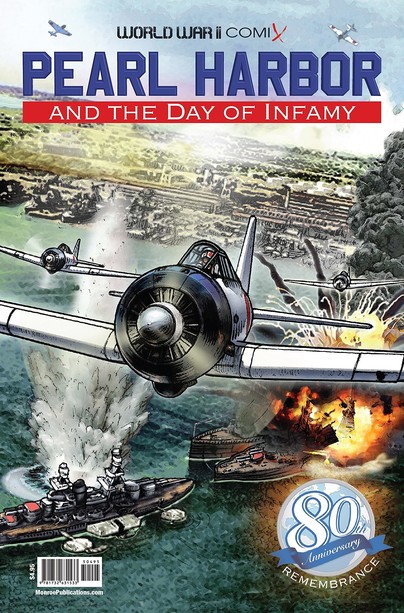
Format: Paperback
Pages: 24
ISBN: 9781732631533
Pub Date: 15 Nov 2021
Description:
Starting with the background of Japan's rise to military prominence and the Asian country's aggressive behavior against its neighbors, this graphic history covers all the significant events leading up to that fateful aerial attack on December 7, 1941. Japan's simultaneous surprise attacks in the Philippines and elsewhere in Asia and the Pacific are included, as is America’s reaction to the bombing of Hawaii. Also includes the introduction to a serialized adventure graphic novel set during the War in the Pacific entitled Separated by War.
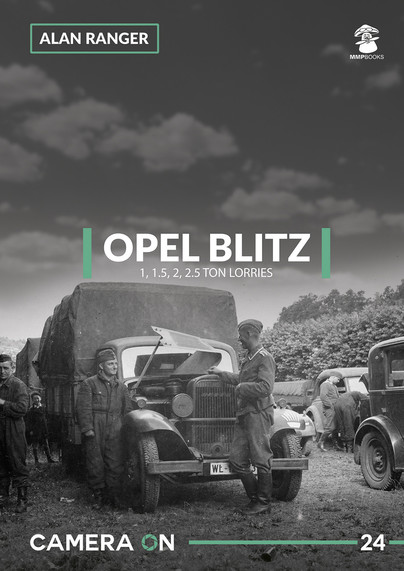
Format: Paperback
Pages: 80
ISBN: 9788365958976
Pub Date: 29 Oct 2021
Series: Camera ON
Illustrations: B&W photos
Description:
Opel Blitz (German for "lightning") was the name given to various light and middle-weight truck series built by the German Opel automobile manufacturer.Book focused on the light version of the Blitz lorry:Opel Blitz type 3,5-134 & 3,5-157Opel Blitz type 2,0-12Opel Blitz type 2,5-35Opel Blitz type 5200In this volume the author provides a detailed impression of these vehicles through original photographs, taken both during and before the war by the normal German soldiers who both used and served with these now classic lorries.
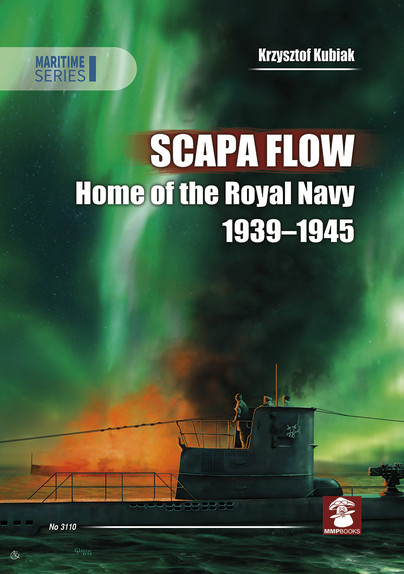
Format: Paperback
Pages: 96
ISBN: 9788366549036
Pub Date: 29 Oct 2021
Series: Maritime Series
Illustrations: B&W photos, color photos, maps
Description:
Because of its great distance from German airfields, Scapa Flow was again selected as the main British naval base during the Second World War.For the war, Scapa Flow remained a very busy naval base, with it serving as a staging point for Arctic Convoys to northern Russia, for example. The military base at Scapa Flow remained in use until 1956.
The book presents the detailed history of the naval base during World War II.Many photos and maps help readers explore history of this Royal Navy base.
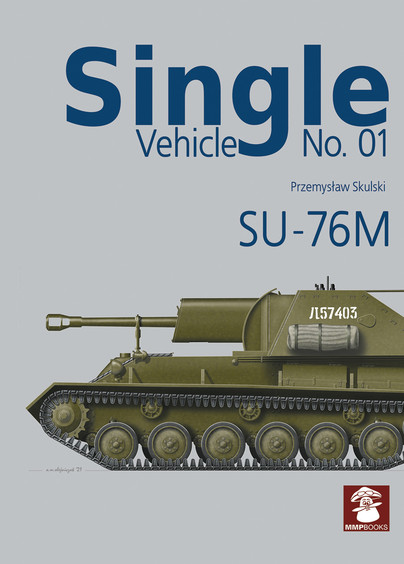
Format: Paperback
Pages: 28
ISBN: 9788366549579
Pub Date: 29 Oct 2021
Series: Single Vehicle
Illustrations: photos, color profiles, scale plans
Description:
This book contains compilations of the color profiles, scale plans, and photo details of the single variant of the Su-76M Soviet self-propelled gun. Scale plans are in 1/35 scale plus drawings from wartime technical manuals. Also inlcudes photos of the details in b&w.
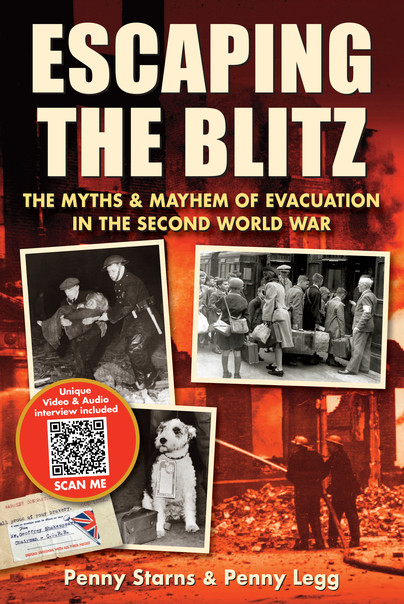
Format: Paperback
Pages: 192
ISBN: 9781781220177
Pub Date: 01 Sep 2021
Illustrations: illustrated throughout
Description:
Escaping the Blitz is the story of the biggest social upheaval in British history. Portrayed by the government as a positive by-product of the Second World War, civilian evacuation represented the cornerstone of Britain's civil defence strategy. In a single stroke, children were uprooted from their close-knit families and replanted in unfamiliar and sometimes hostile surroundings.
Over the course of three days beginning on 31st August 1939, three and a half million vulnerable adults and children were evacuated from cities to rural areas. This totally haphazard mingling of social classes had profound and long-lasting effects on British society. From a government standpoint evacuation was an exercise in military logistics, but for those who took part it was a life changing experience. Furthermore, there was no typical evacuee experience, only a shared sense of alienation in the face of extreme adversity. The general trend for domestic evacuation was for central government to offload responsibility for evacuees onto rural local authorities. When it became clear that the latter had neither the basic resources nor administrative machinery to cope with large influxes of evacuees, central government was forced back into the policy driving seat. Yet a completely different approach was adopted towards overseas evacuation. Known as Sea-Vacs, children sent abroad were expected to act as ambassadors for Britain, tug at the heart strings of host nations, and elicit international financial support for the war effort. Aside from this role Sea-Vacs were essential for the survival of the British race, and government ministers fully expected them to eventually fight from the colonies in the event of a German invasion of Britain. Public perceptions of children however, shifted throughout the war. In 1939 children were either viewed as innocents in need of protection, or as useless mouths who were draining the nation of vital food supplies. Yet by 1941 they had become active participants in the war effort, and children as young as five could be found working on the land. By 1943 the Ministry of Agriculture and Fisheries considered children to be a vital component in Britain's food production industry. They remained so long after the war had ended. Moreover, although some evacuees were lucky enough to have positive and uplifting encounters with their host families, others less fortunate suffered physical, emotional and sexual abuse. This book reveals the myths and mayhem which accompanied the three waves of wartime evacuation and document the experiences of evacuees in their own words. Throughout the book QR codes link readers (using a suitable phone or tablet) to unique video content of evacuees telling their story in their own words.
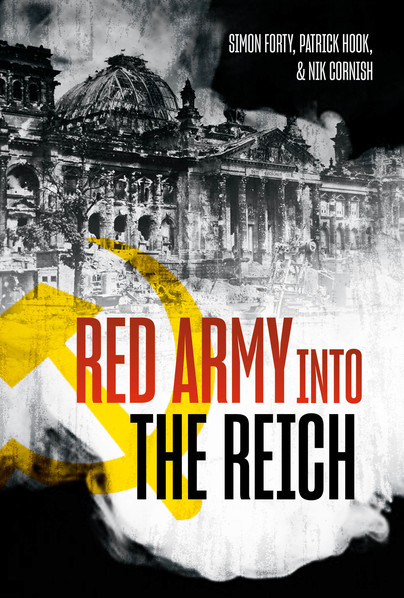
Format: Hardback
Pages: 256
ISBN: 9781636240220
Pub Date: 01 Sep 2021
Illustrations: 500 photos and maps
Description:
The last year of the war saw Russian offensives that cleared the Germans out of their final strongholds in Finland and the Baltic states, before advancing into Finnmark in Norway and the east European states that bordered Germany: Poland, Czechoslovakia and Hungary. By spring 1945 the Red Army had reached to Vienna and the Balkans, and had thrust deep into Germany where they met American, French and British troops advancing from the west. The final days of the Third Reich were at hand.
Berlin was first surrounded, then attacked and taken. Hitler's suicide and his successors' unconditional surrender ended the war. For writers and historians who concentrate on the Western Allies and the battles in France and the Low Countries, the Eastern Front comes as a shock. The sheer size of both the territories and the forces involved; the savagery of both weather and the fighting; the appalling suffering of the civilian populations of all countries and the wreckage of towns and cities - it's no wonder that words like armageddon are used to describe the annihilation. Red Army into the Reich combines a narrative history, contemporary photographs and maps with images of memorials, battlefield survivors and then & now views. It may come as a surprise to the western reader to see how many memorials there are to Russia's Great Patriotic War and those to the losses suffered by the countries who spent so long under the murderous Nazi regime.
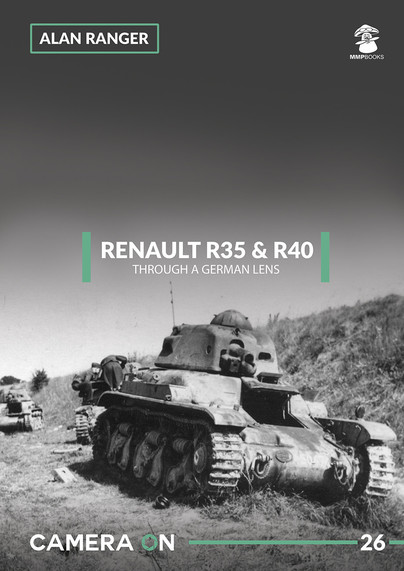
Format: Paperback
Pages: 80
ISBN: 9788365958990
Pub Date: 26 Aug 2021
Series: Camera ON
Illustrations: B&W photos
Description:
The Renault R35, an abbreviation of Char léger Modèle 1935 R or R35, was a French light infantry tank of the Second World War.Designed from 1933 and produced from 1936, the tank was intended as an infantry support light tank. To this end it was relatively well-armored but slow and lacking a good antitank-capacity, fitted with a short 37 mm gun.
At the outbreak of the war, the antitank-role was more emphasized leading to the development and eventual production from April 1940 of a subtype with a more powerful longer gun, the Renault R40. Due to the defeat of France the R35/40 remained the most numerous French tank of the war. About 1680 vehicles having been produced by June 1940.In this volume the author provides a detailed impression of these vehicles through original photographs, taken both during by the normal German
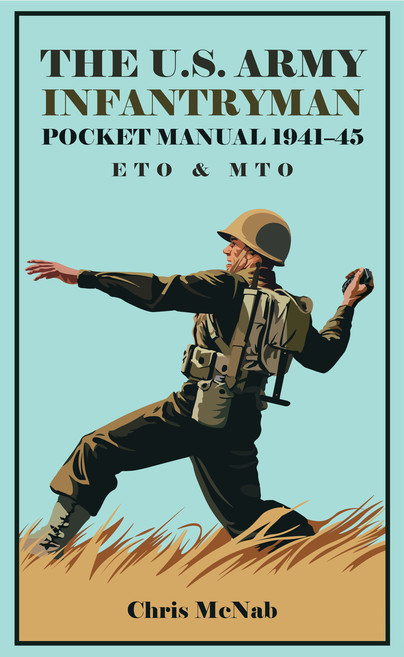
Format: Hardback
Pages: 160
ISBN: 9781636240282
Pub Date: 05 Aug 2021
Illustrations: diagrams and illustrations
Description:
The battle for Europe in 1943-45 was one of the greatest military challenges in the history of the U.S. Army.
Fighting against often veteran German forces from the mountains of Italy to the beaches of Normandy and the frozen forests of the Ardennes, hundreds of thousands of US infantrymen had to move quickly beyond their training and acquire real-world combat skills with extraordinary pace, if they were to raise their chances of survival beyond a few days. They fought in an age of total war, in which the enemy deployed heavy armor, artillery, air power, and their own infantry firepower in a battle of true equals. Without the drive and blood of the U.
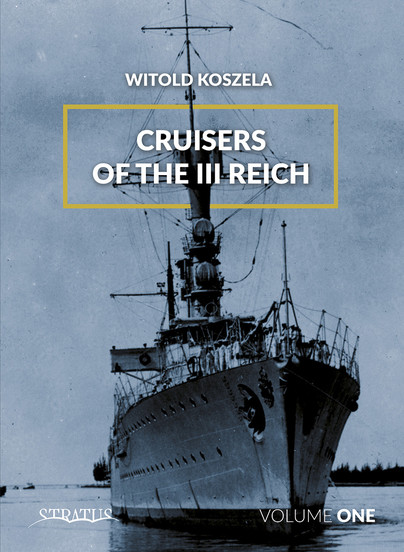
Format: Hardback
Pages: 200
ISBN: 9788365958846
Pub Date: 23 Jul 2021
Illustrations: B&W photo, scale plans, color profiles
Description:
This book is a compilation in which we will find in one place (two volumes) the stories of all the German cruisers that were in Kriegsmarine service.Author describes their history in the order in which they entered the service, devoting much attention to their construction, precisely describing the differences among others. Going back to the history of the service, trying not to forget about the many curiosities in this policy and people who have a direct influence on their fate.
Many excellent quality photographs primarily from private collections.All the ships are described and illustrated with full technical specifications. Profusely illustrated with scale drawings and color illustrations.Cruisers describes in vol. 1:EmdenKonigsbergKarlsruheKolnLeipzig
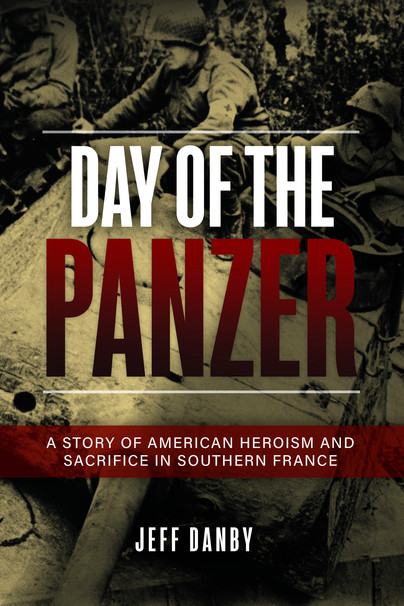
Format: Paperback
Pages: 384
ISBN: 9781612009971
Pub Date: 15 Jul 2021
Illustrations: 14 maps and 8 illustrations
Description:
This is a rarely detailed, "you are there" account of World War II combat, describing a brief but bloody tank/infantry action in August 1944. Based on six years of research – drawing from interviews, primary documents, and visits to the battlefield – The Day of the Panzer transports the reader into the ranks of L Company, 15th Regiment, Third Infantry Division, and its supporting M4s of the 756th Tank Battalion as they grapple head-on with the Wehrmacht. On August 15, 1944, L Company hit the beaches in southern France, joined by the tank crews of 2nd Lt.
Andrew Orient’s 3rd Platoon, all veterans of Cassino. Despite logistical problems, the Third Division forged north through the Rhône River valley, L Company and its supporting tanks leading the regimental charge - until they faced a savage counterattack by the Germans and a rampaging Panther tank… In this book, the minute-by-minute confusion, thrill, and desperation of WWII combat is placed under a microscope, as if the readers themselves were participants. "[An] excellent popular history… a sprightly and evocative tribute to the troops of Operation Dragoon" – Publishers Weekly "Through his well-wrought prose, Danby paints a detailed picture of deadly fighting and stunning victory" – WWII History "One of the most interesting and absorbing battles histories that this reviewer has ever read… remarkably realistic and personal." – History Book Club "The excellent descriptions of infantrymen, tankers and supporting troops from the 15th’s Cannon Company using M8 self-propelled howitzers and the three inch gun armed M10s of the 601st Tank Destroyer Battalion make for good reading." – War History Online
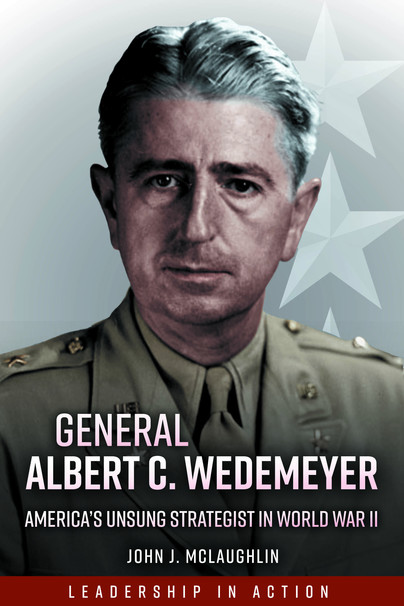
Format: Paperback
Pages: 368
ISBN: 9781636240497
Pub Date: 15 Jul 2021
Illustrations: illustrated section
Description:
Like many heroes of World War II, General Albert C. Wedemeyer's career has been largely overshadowed by such well-known figures as Marshall, Patton, Montgomery and Bradley. Wedemeyer's legacy as the main planner of the D-Day invasion is almost completely forgotten today, eclipsed by politics and the capriciousness of human nature.
In the late 1930s Wedemeyer had the unique experience of being an exchange student at the German Kriegsakademia, the Nazis'equivalent of Fort Leavenworth's Command and General Staff School. As the only American to attend, he was thus the only ranking officer in the US who recognised the revolutionary tactics of Blitzkrieg once they were unleashed, and he knew how to respond.As US involvement in the European conflagration approached, Wedemeyer was taken under the wing of George C. Marshall in Washington, but although he conceived the plans for US mobilisation, to his great disappointment he was not appointed to field command once the invasion commenced; further, he had run afoul of Winston Churchill due to the latter's insistence on emphasising the Mediterranean theatre in 1943.Perhaps because of Churchill's animosity, Wedemeyer was transferred to the Burma-China theatre, where a year later he would replace General Stilwell. Ultimately, Wedemeyer's service in the Asian theatre became far more significant, though less known. Had the US political establishment listened to Wedemeyer on China during the years 1943-48, it is possible China would not have been lost to the Communists and would have been a functioning US ally from the start, thus eliminating the likelihood of both the Korean and Vietnam Wars.
















